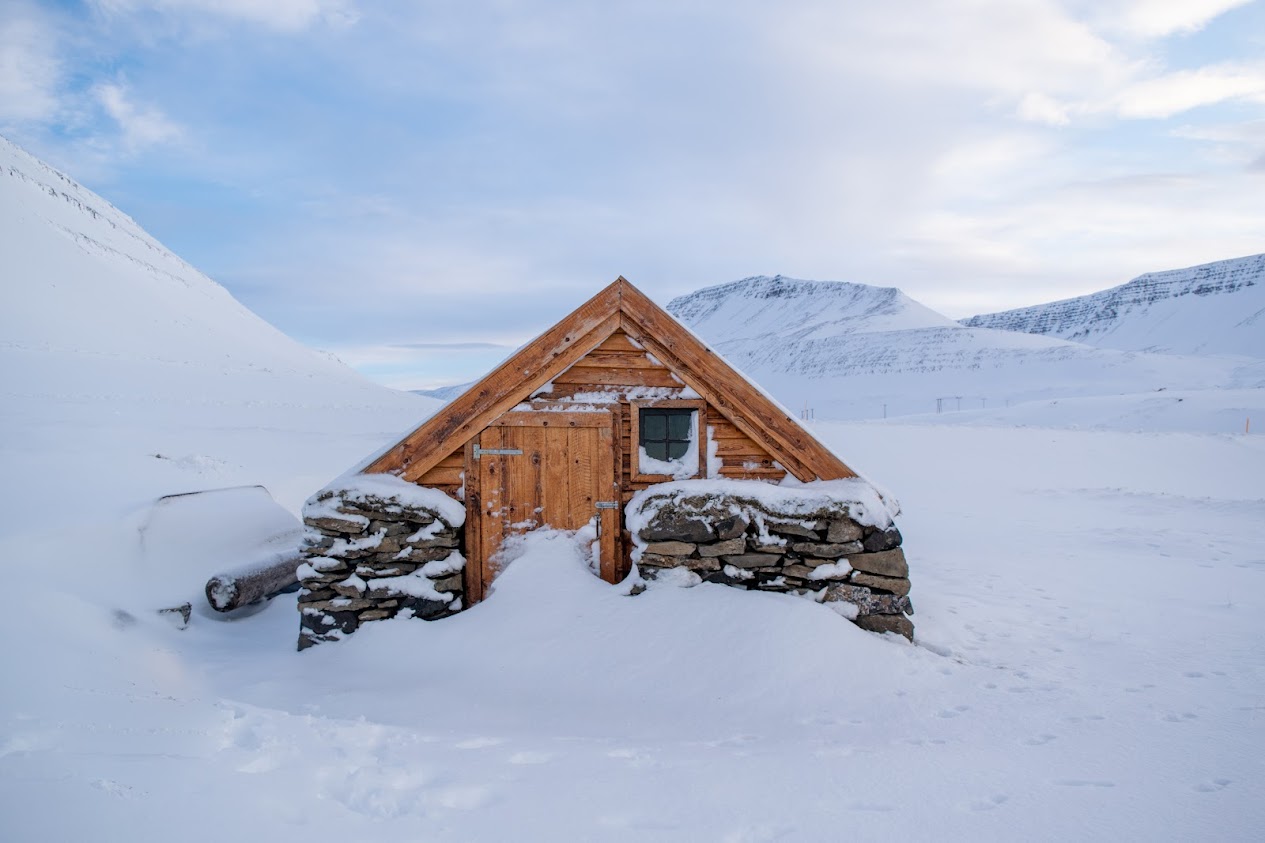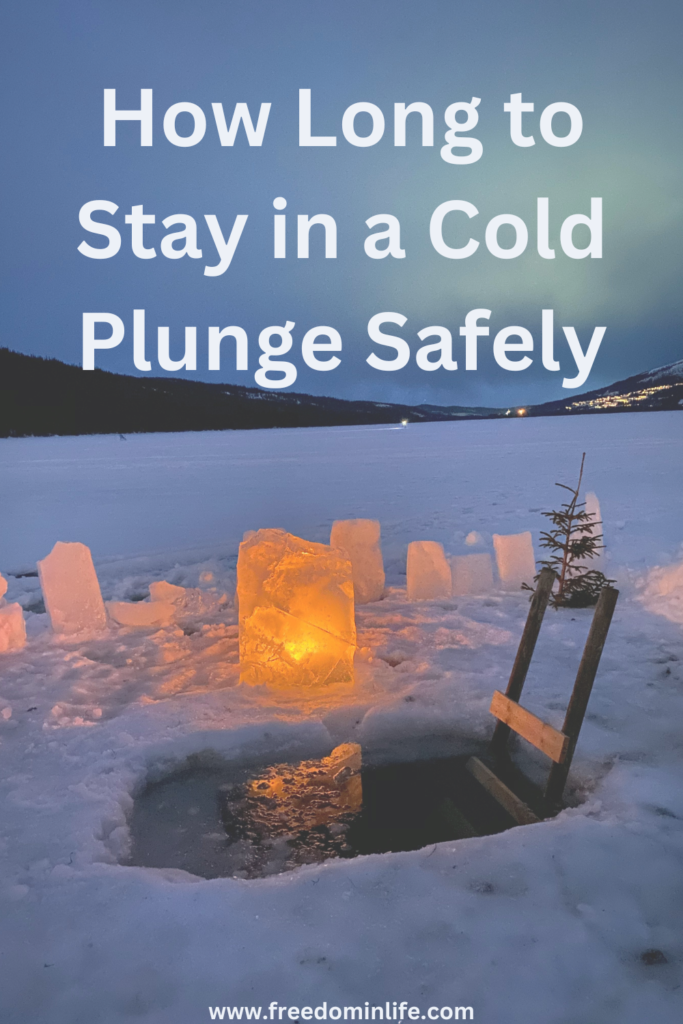
Cold plunges are everywhere right now. Whether it’s the Wim Hof method or the growing trend of breathwork and cold therapy, it’s hard to miss. And honestly, it’s not just hype—if you’ve ever tried it, you’ve probably felt the benefits straight away.
But while cold-water immersion sounds simple, I’ve had a lot of people ask me specific questions: How long to stay in a cold plunge? How cold should it be? What’s the best way to recover after?
In this post, I’ll answer these questions and share what I’ve learned about cold plunging, including tips for beginners and insights for more experienced dippers. Your time in the water depends on factors like experience, goals, and even the day’s weather, so I’ll break it all down.
As for my experience—I’ve been at this a while. I’m a freedive and swim instructor, breathwork and meditation facilitator, and long-time resident of Iceland (where ice swimming is basically a national pastime). Before moving to Iceland, I was always ocean swimming in Ireland, and I’ve also started entering the world of competitive ice swimming in 2025. Combining breathwork with cold immersion is my go-to for finding inner peace and freedom.
So, let´s get into it.
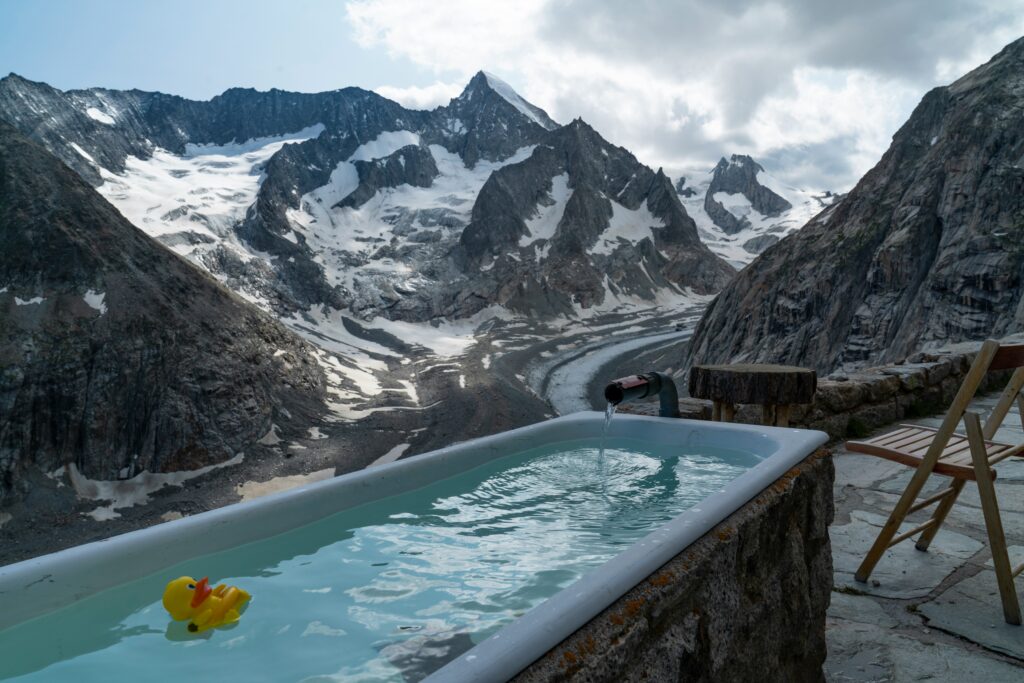
Factors That Influence How Long You Stay
1. Water Temperature
When people think “cold plunge,” the temperature can range quite a bit—from an ice bath at 0°C to a brisk ocean swim at 10°C. Naturally, the colder it is, the less time you should stay in, especially if you’re just starting out and are still building your tolerance.
The weather also plays a role. Some days, you’ll feel strong and last a few minutes, while a windy or overcast day might cut your dip short—and that’s perfectly okay.
2. Experience Level
Beginners shouldn’t aim for marathon sessions in the water. Stick to 30 seconds to a minute to start, then work your way up gradually. It’s not always obvious when you’re reaching your limit, so ease into it and don’t rush.
3. Individual Health
If you have any preexisting health conditions, especially heart or circulatory issues, check with your doctor before plunging in. Cold water can be intense, and safety always comes first.
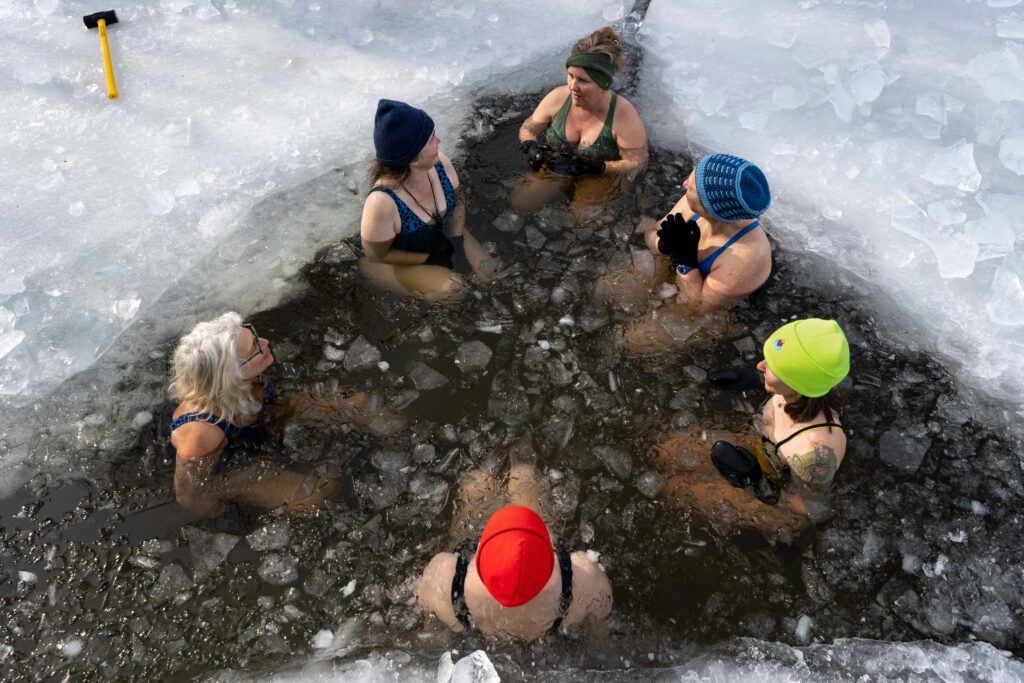
How Long Should You Stay?
For Beginners:
Start small—30 seconds to 1 or 2 minutes max. Pay attention to how your body feels, and get out before you’re too cold to dress yourself. (Trust me, struggling to zip up your jacket with numb fingers is no fun.)
For Intermediate Dippers:
Once you’ve built some tolerance, aim for 2 to 5 minutes. At this stage, it’s all about controlling your breathing and finding that calm headspace in the cold.
For Advanced Practitioners:
After you can manage 5 minutes no bother, then you can start to push your limits bit by bit. This is where the fun starts! You can try to work up to even 10 minutes safely. As always make sure to progress slowly, even as a more advanced dipper.
Make sure you have a good exit and recovery set in place here too. You want to make sure you spend as little time as possible warming up afterwards, so make things easy for yourself in preparation. Have a towel handy, a hot drink and easy loose clothes to throw on.
When to Get Out
If you’re unsure when to exit, here are a few signs to watch for:
- Obvious ones: shivering, numbness, or feeling cold.
- Subtle ones: trouble speaking, clumsiness, or feeling “off.”
If your pulse slows down or your breathing feels weird, don’t wait—get out. Recovery from hypothermia is no joke, it can lead to respiratory and heart problems. It affects your nervous system and can damage other organs. If you stay in too long, you’re putting your body at risk of losing heat faster than it can produce it, which can quickly become life-threatening. This is why knowing when to exit and building tolerance gradually is essential.
Starting slow and building tolerance is super important. Because for all the health benefits of cold plunges, you don’t want to push it too far and cause health problems relating to hypothermia. Always stay conservative and cautious
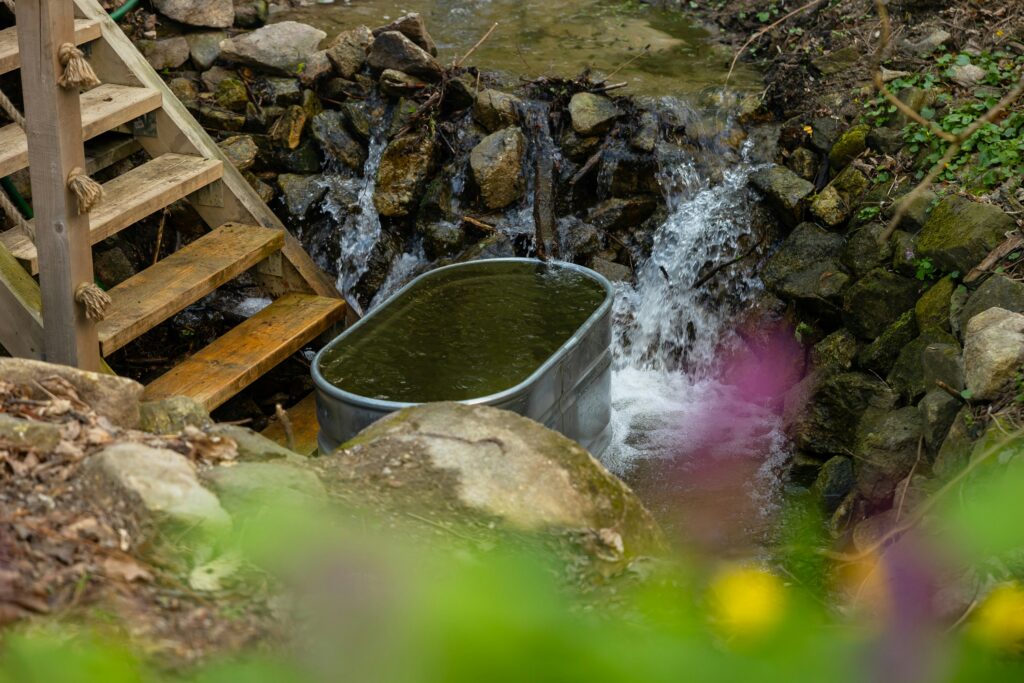
Preparing for Your Cold Plunge
Before the Plunge
It can help a lot to have a proper warmup. This can change as you develop and become more confident in the water, or it can stay the same and become your go to routine. Warm up with a few squats, jumping jacks, or pushups to get your blood flowing. Then take a moment to center yourself with some deep, calming breaths.
During the Plunge
Ease into the water gradually—don’t just cannonball in! Expect your breathing to speed up at first, but focus on calming it down. Techniques like box breathing or diaphragmatic breathing can help you stay relaxed. Lean into the sensations instead of trying to resist them. The initial cold shock to the body should subside after around 1 minute
After the Plunge
Make recovery easy: have a towel, warm clothes, and a hot drink ready to go. Loose, cozy layers are best—save the jeans and button-up shirts for later.
Once you’re out, take a minute to savor the experience. Feel the buzz, take a deep breath, and appreciate what you’ve just done. But don’t jump straight into a hot shower—warm up slowly to let your body adjust.
Benefits of Cold Plunge Based on Duration
Under 2 Minutes:
A quick dip is great for a morning wake-up or muscle recovery after a workout. You’ll feel an immediate boost in energy and circulation.
2–5 Minutes:
Staying in a little longer helps build mental resilience and stress tolerance. Plus, the recovery benefits for your muscles keep adding up.
5–10 Minutes:
Longer dips require serious focus and mental discipline, but they also lead to greater cardiovascular benefits. Just make sure you’re practicing safely and not overdoing it.
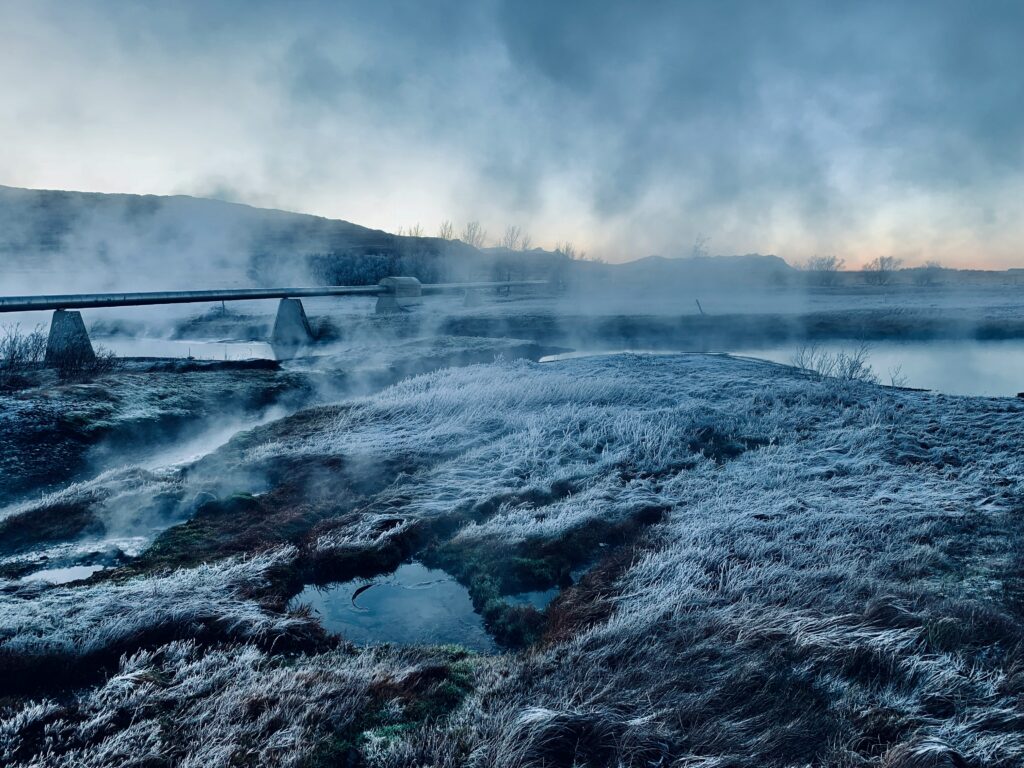
Common Mistakes to Avoid
- Staying in too long. Know your limits!
- Rushing into the water. Give your body time to adjust.
- Skipping the recovery plan. Keep your towel, warm clothes, and tea ready to go.
To Wrap Up
Cold plunging is an amazing practice, but it’s all about balance. Progress gradually, listen to your body, and enjoy every step of the journey—from the pre-dip warmup to the post-dip glow. The whole routine can be made a mindful experience and will do wonders for your health and mental wellbeing.
Always make sure to prioritize safety and do not stay too long in the cold water. What you can do one day does not mean you can do it automatically the next day, so listen to your body and don’t be stubborn. Play it safe and have fun.
Let me know how your cold plunge experience goes—I’d love to hear your tips and stories. Whether you’re braving icy lakes or tropical oceans, make it a mindful, joyful routine that leaves you feeling refreshed and alive.

